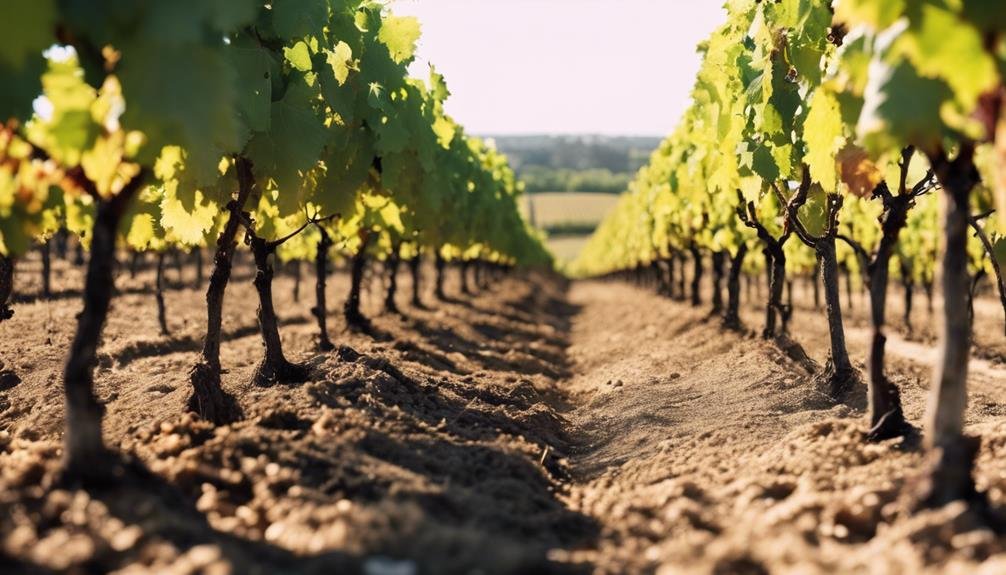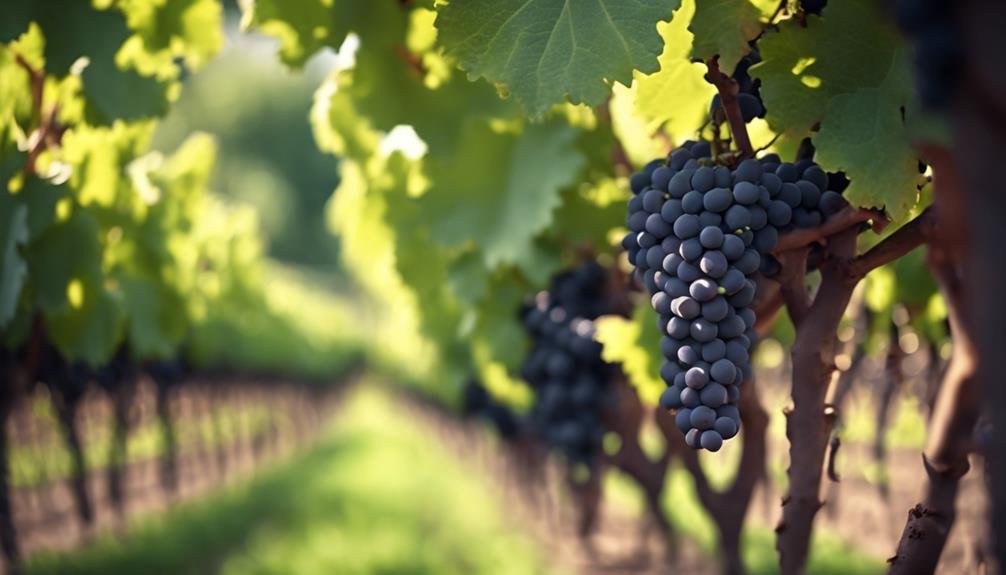Soil secrets play a significant role in crafting fine wine profiles. Sandy soils give rise to elegant wines with high aromatics, while clay soils produce robust wines with intense color. Silt soils offer smooth, rounded wines with balanced acidity, and loam soils provide a breeding ground for high-quality grapes with meticulous care. Varied soil types like gravel, schist, slate, and limestone all leave their mark on wine characteristics. To uncover the intricate relationship between soil and wine, understanding the soil secrets is essential. These hidden details hold the key to revealing the full potential of exquisite wine profiles.
Soil Influence on Wine Characteristics
The foundation of a vineyard, its soil composition, plays a pivotal role in shaping the distinctive characteristics found in wines worldwide. Different soil types influence the development of aromatics in wines. Sandy soils, known for their excellent drainage and heat retention, produce elegant wines with high aromatics, pale color, and low tannins.
On the other hand, clay soils, which tend to stay cooler and retain water, give rise to muscular wines with high extract and color. Silt soils, with their water and heat retention properties, create smooth and round wines with slightly less acidity.
Loam soils, a mix of silt, clay, sand, and organic matter, offer potential for high-quality grapes when managed with rigorous pruning regimes. Other soil types like gravel, schist, slate, and limestone also play significant roles in shaping wine profiles.
Famous Wines From Various Soil Types
Exploring the impact of varying soil compositions on wine profiles reveals a fascinating array of famous wines renowned for their distinct characteristics. Soil diversity plays an essential role in terroir expression, influencing the flavors and aromas of wines.
Vineyard sustainability and soil health are vital in maintaining the quality and unique attributes of these renowned wines. Sandy soils, such as those found in Cannubi in Barolo and Northern Médoc in Bordeaux, produce elegant wines with high aromatics and low tannins.
Clay soils, like those in Rioja and Ribera del Duero, yield muscular wines with intense color and extract. Silt soils, such as Loess soils in Washington, offer smooth and round wines with balanced acidity.
Each soil type contributes to the complexity and individuality of these famous wines.
Impact of Soil Drainage and Heat Retention

Influence of soil drainage and heat retention on grapevines profoundly shapes the characteristics of wines produced. Water retention in soil affects vine stress, influencing grape quality. Excess water can lead to diluted flavors, while insufficient water causes vine stress and stunts growth. Proper drainage is essential for root development, allowing vines to access nutrients and water effectively.
Heat distribution in the soil also plays a significant role in grape ripening and flavor development. Roots require warmth for best growth, and heat-retentive soils can help maintain stable root temperatures. Understanding the balance between water retention and heat distribution is crucial for cultivating grapevines that produce high-quality wines with complex flavors and desirable characteristics.
Crafting Wine Profiles With Limestone Soils
Crafting wine profiles with limestone soils involves harnessing the unique benefits of this mineral-rich foundation to enhance grape quality and flavor complexity. Limestone soils offer beneficial nutrients to grapes, aiding in their growth and development. These soils retain moisture during dry weather conditions, ensuring the vines have access to water when needed.
Additionally, limestone provides good drainage during cooler weather, preventing waterlogging that could harm the grapevines. However, it's important to note that excessive limestone content can lead to iron deficiency in grapes, affecting their overall health. Some famous wines that thrive in limestone soils include Champagne, Chablis, and Paso Robles, showcasing the unique flavors and characteristics that this type of soil imparts to the grapes.
Enhancing Grape Quality With Loam Soils

Moving from the domain of limestone soils to the domain of loam soils, vintners can harness a different set of advantages to enhance grape quality and flavor complexity.
Loam soils, a mix of silt, clay, sand, and organic matter, are typically too fertile on their own, but when blended correctly, they offer great potential for vineyard management.
While most loam soils produce wines with little flavor and color, regions like Sonoma and Napa Valleys have leveraged loam soils to produce high-quality grapes.
To enhance grape quality on loam soils, vintners focus on rigorous pruning techniques and precise vineyard management.
Understanding the soil composition and its impact on terroir expression is essential for crafting exceptional wines on loam soils.
Frequently Asked Questions
How Do Different Soil Types Affect the Ph Level of Wines?
Different soil types affect wine pH levels through water retention and nutrient availability. Sandy soils drain well, leading to higher pH levels, while clay soils retain water, reducing pH. Limestone-rich soils provide beneficial nutrients but can potentially cause pH imbalances.
Can Soil Composition Influence the Development of Grape Flavors?
Soil composition profoundly influences grape flavors through microbial interactions and nutrient availability, affecting root development and water retention. An intriguing statistic reveals that limestone-rich soils in Champagne, Chablis, and Paso Robles contribute unique flavors to renowned wines.
Do Specific Soil Types Contribute to the Aging Potential of Wines?
Specific soil types can influence the aging potential of wines by impacting tannin structure and mineral influence. Soil composition, particularly limestone-rich soils, can enhance aging capabilities, offering nuanced flavors and complexity to wines over time.
Are There Certain Soil Characteristics That Enhance Grape Resilience to Climate Change?
Certain soil characteristics like well-drained sandy soils and limestone-rich soils can enhance grape resilience to climate change. Sandy soils offer drought resistance, while limestone soils aid in nutrient absorption, creating more robust vines.
Can Soil Types Impact the Expression of Terroir in Wines?
Soil composition plays a crucial role in vine health, influencing terroir expression through its impact on environmental factors. Different soil types, such as sandy, clay, silt, and loam, contribute distinct characteristics to wines, shaping their unique profiles.
Conclusion
In the intricate world of winemaking, the soil plays a pivotal role in shaping the unique characteristics of wines. From the elegance of sandy soils to the boldness of clay-rich terroirs, each soil type imparts distinct flavors and aromas.
Understanding how different soils influence grape cultivation is essential for creating exceptional wine profiles. As the saying goes, 'You reap what you sow,' highlighting the importance of soil in crafting fine wines.
